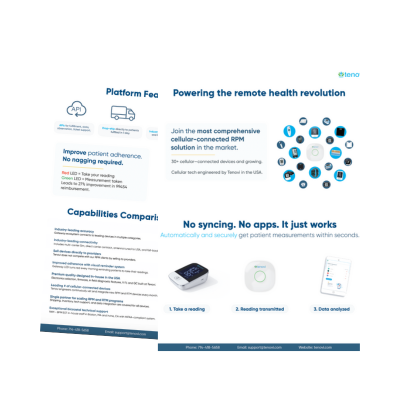Musculoskeletal disorders (MSDs) encompass a wide range of conditions affecting the body’s muscles, bones, joints, tendons, ligaments, and connective tissues. These disorders can lead to pain, stiffness, swelling, and decreased mobility, significantly impacting an individual’s quality of life. Understanding the various types of MSDs, available treatments—including remote healthcare options—and the mechanisms for healthcare professionals to bill for remote therapeutic monitoring (RTM) services is crucial for effective management and improved patient outcomes.
Common Types of Musculoskeletal Disorders
Musculoskeletal disorders can be broadly categorized based on the affected tissues and underlying causes. Some of the most prevalent MSDs include:
Osteoarthritis: A degenerative joint disease characterized by the breakdown of cartilage, leading to pain, swelling, and reduced joint flexibility. Factors such as aging, genetics, and joint injuries contribute to its development. Rheumatoid Arthritis: An autoimmune disorder where the immune system attacks the synovium—the lining of the membranes surrounding the joints—resulting in inflammation and joint damage. This condition often leads to joint deformities and can affect other organs.
Fibromyalgia: A chronic condition characterized by widespread musculoskeletal pain, fatigue, and tenderness in localized areas. The exact cause is unknown, but it is believed to involve a combination of genetic and environmental factors.
Tendinitis: Inflammation or irritation of a tendon, commonly caused by repetitive motion or overuse, leading to pain and tenderness just outside a joint.
Carpal Tunnel Syndrome: A condition resulting from compression of the median nerve as it travels through the wrist, causing numbness, tingling, and weakness in the hand.
Remote Healthcare Options for Musculoskeletal Conditions
Telehealth has expanded the options for managing MSDs remotely. It gives patients increased access to care and convenience. Some remote healthcare options include:
Virtual Physical Therapy: Telehealth platforms enable patients to engage in physical therapy sessions remotely. Through video consultations, therapists can assess patient progress, demonstrate exercises, and provide real-time feedback. This approach has been shown to improve pain and functional status for individuals with various musculoskeletal conditions.
Digital MSK Programs: Digital programs offer exercise regimens, educational content, and coaching tailored to individual needs. These programs aim to enhance patient engagement and adherence to treatment plans, leading to better outcomes.
Remote Monitoring Devices: Wearable devices and mobile applications can monitor patient activity levels, adherence to exercise routines, and symptom progression. Data collected can be shared with healthcare providers to inform treatment adjustments.
Medication Adherence Support
Ensuring patients adhere to prescribed medication regimens is vital for managing MSDs effectively. Remote strategies to support medication adherence include:
Digital Reminders: Mobile apps and electronic pill dispensers can remind patients to take medications at scheduled times, reducing missed doses.
Telepharmacy Services: Pharmacists can conduct virtual consultations to educate patients about their medications, address concerns, and monitor for side effects, thereby promoting adherence.
Billing for Remote Therapeutic Monitoring (RTM) Services
The Centers for Medicare & Medicaid Services (CMS) have introduced billing codes to reimburse healthcare providers and MSK specialists for RTM services, which involve monitoring non-physiological health data such as therapy adherence and response. Key RTM codes include:
CPT Code 98975: Initial setup and patient education on the use of monitoring equipment.
CPT Code 98976: Device supply with the daily recording or programmed alert transmission, every 30 days.
CPT Code 98980: RTM treatment management services requiring at least one interactive communication with the patient during the calendar month; first 20 minutes.
CPT Code 98981: Each additional 20 minutes of RTM management services.
These codes enable qualified health professionals, including physical therapists, occupational therapists, and speech-language pathologists, to bill for remote monitoring services, thereby extending care beyond traditional clinical settings.
Impact of Remote Healthcare on Musculoskeletal Outcomes
Research indicates that remote healthcare interventions can lead to significant improvements in managing musculoskeletal disorders. A study published in BMC Musculoskeletal Disorders found that participants in a digital musculoskeletal program experienced reductions in pain and improvements in function over 12 months compared to non-participants.
Additionally, virtual care models have been associated with increased patient satisfaction due to the convenience of accessing care from home, reduced travel time, and flexible scheduling. These factors contribute to higher adherence to treatment plans and better overall outcomes.
Understanding Common Types of Musculoskeletal Disorders
Musculoskeletal disorders present significant challenges, but advancements in remote healthcare offer promising avenues for effective management. Through virtual physical therapy, digital health programs, and remote monitoring, patients can receive comprehensive care that enhances adherence, reduces symptoms, and improves quality of life. For healthcare providers, understanding the billing mechanisms for RTM services is essential to integrate these innovative approaches into practice successfully.


